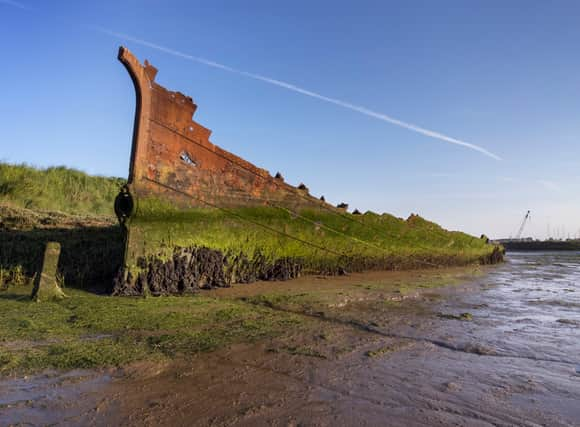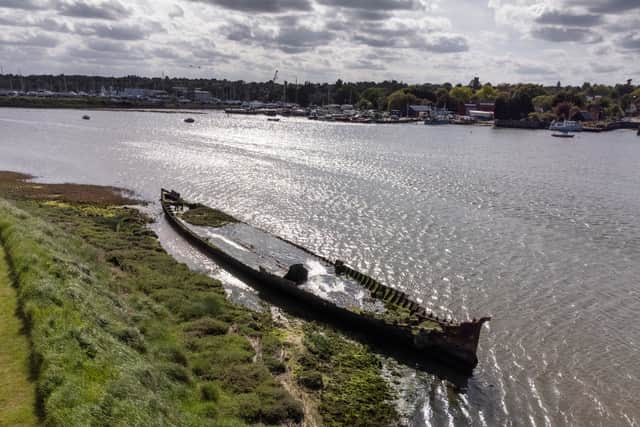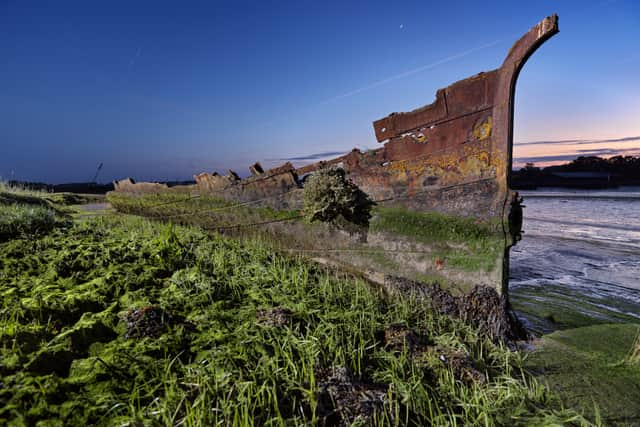The story of dismantled Victorian steamship designed by Hercules Linton & now reclaimed by nature in Suffolk


The dismantled remains of a once iconic Victorian ship built by a famed designer lie in a UK river, slowly being reclaimed by nature. The iron hulk of the Lady Alice Kenlis steamship will continue its battle to stand the test of time.
The ship, built in 1867 by Hercules Linton was used initially as a cargo ship, then a ferry, and then finally as a dredger. Linton is also known as having designed The Cutty Sark which is now looked after by Royal Museums Greenwich. That ship from 1869 was one of the last tea clippers ever built, and also one of the fastest as it could sail from London to Sydney in 73 days.
Advertisement
Hide AdAdvertisement
Hide AdThe remains of the Lady Alice Kenlis are referred to as a ‘hulk’ rather than a shipwreck as there has been no wrecking event. Hulks are ships that have been abandoned, partially dismantled and then stripped of their fittings before being permanently moored within intertidal areas, canals, and rivers.
To ensure it remains a physical piece of modern British maritime history, the steamship has been granted protection by the Department for Culture, Media and Sport (DCMS) on the advice of Historic England.


Duncan Wilson, Chief Executive of Historic England said: ‘‘Whilst only the rather ghostly remains of the Lady Alice Kenlis survive, it deserves protection as an important part of our seafaring history.
"Being able to see the hulk of the ship itself emerging from the intertidal zone of the River Deben is striking and unusual.”
Advertisement
Hide AdAdvertisement
Hide AdThe hulk is situated on the National Trust’s Sutton Hoo estate but is not publicly accessible due to its location.
The Lady Alice Kenlis is important to understanding early iron ships and its relationship to the Cutty Sark offers an insight into Linton’s evolution of thought. Protection by scheduling will ensure that the hulk of the ship will be protected by law. The ship was named after Alice Maria Hill, daughter of the Earl of Hillsborough, who married Lord Kenlis, a politician and the Earl of Bective in Ireland, to become Lady Alice Kenlis in 1867.


Angus Wainwright, Archaeologist at the National Trust said: “Although we knew that the Lady Alice Kenlis was an interesting ship, we didn’t appreciate just how historically important she was. This is now our second scheduled ship at Sutton Hoo, as we also look after the site where the famous Anglo-Saxon burial ship was excavated in 1939. What’s interesting to me, is that the Sutton Hoo ship was nearly as long as its Victorian descendant, the Lady Alice Kenlis.
The Lady Alice Kenlis vessel was built by J&R Swan in Maryhill, Glasgow and launched on December 23, 1867. The hull was heavily built in comparison to other iron ships of the time to allow it to be more easily loaded and unloaded in shallow waters.
Advertisement
Hide AdAdvertisement
Hide AdThe ship was fitted with a two-cylinder 40 horse-power engine and rigged as a three-masted schooner. A schooner is a type of vessel with two or more masts.
Serving as a cargo ship in 1868, it was used to carry cattle, goods and passengers between Northern Ireland, Scotland and England. It was briefly used as a ferry before being converted into a suction dredger in 1913. The vessel continued as a dredger until it was partially dismantled in the late 1930s or early 1940s.
Hercules Linton (1836-1900) was a Scottish shipwright who worked as a surveyor for the Liverpool Underwriters’ Registry as a specialist on iron vessels. Linton went on to form the shipbuilding company Scott and Linton, which built a number of vessels, the most famous being the Cutty Sark, before going bankrupt in 1871.
Councillor Kay Yule, Cabinet Member for Planning and Coastal Management at East Suffolk Council said: “Anyone who uses the River Deben, or who has ever looked towards Sutton Hoo from the opposite quayside, will be very familiar with the sight, if not the name and history, of the Lady Alice Kenlis.
"She really is an established and striking feature of the landscape, so I’m thrilled that her historical significance is being recognised by Historic England with this designation."
Comment Guidelines
National World encourages reader discussion on our stories. User feedback, insights and back-and-forth exchanges add a rich layer of context to reporting. Please review our Community Guidelines before commenting.
